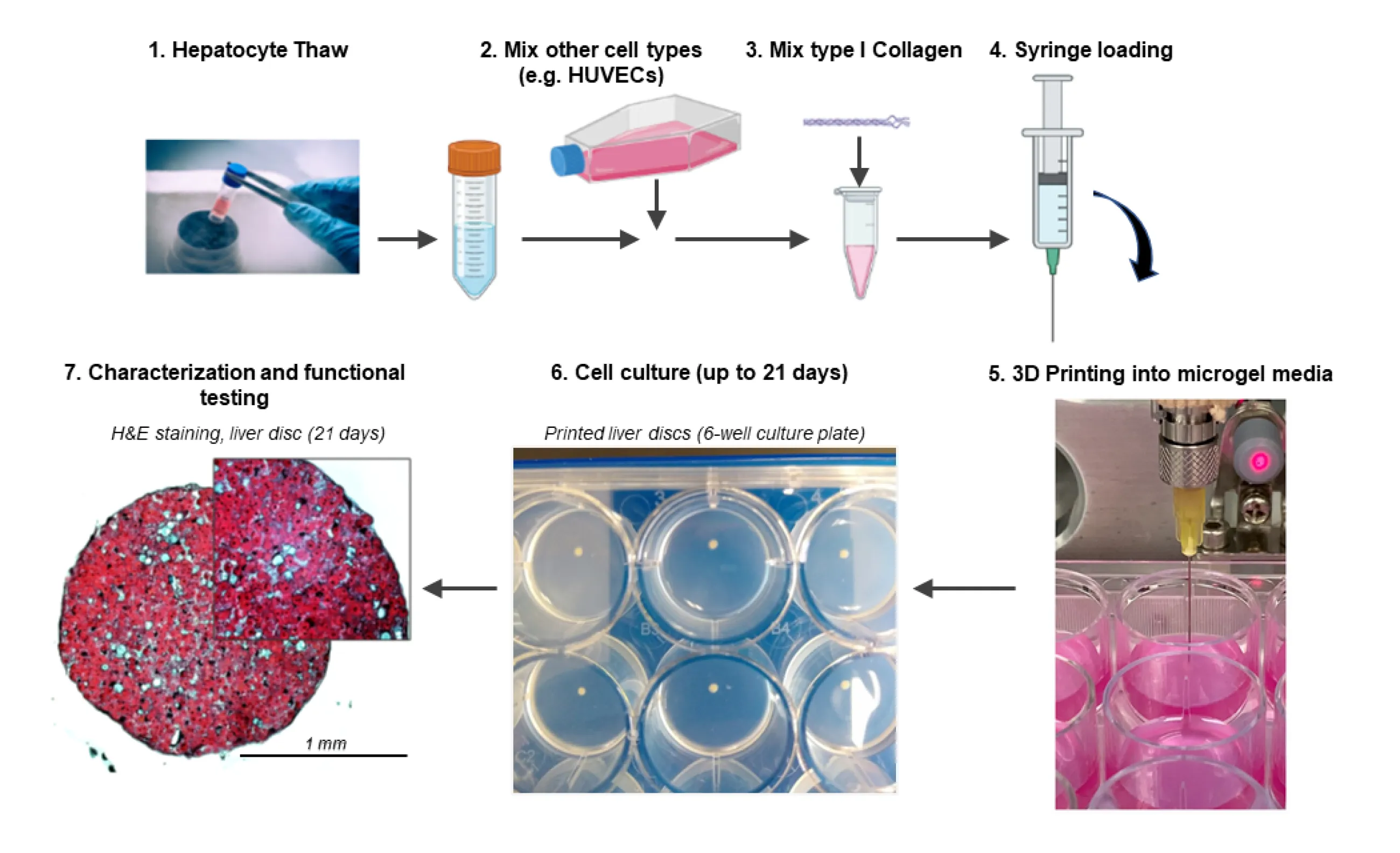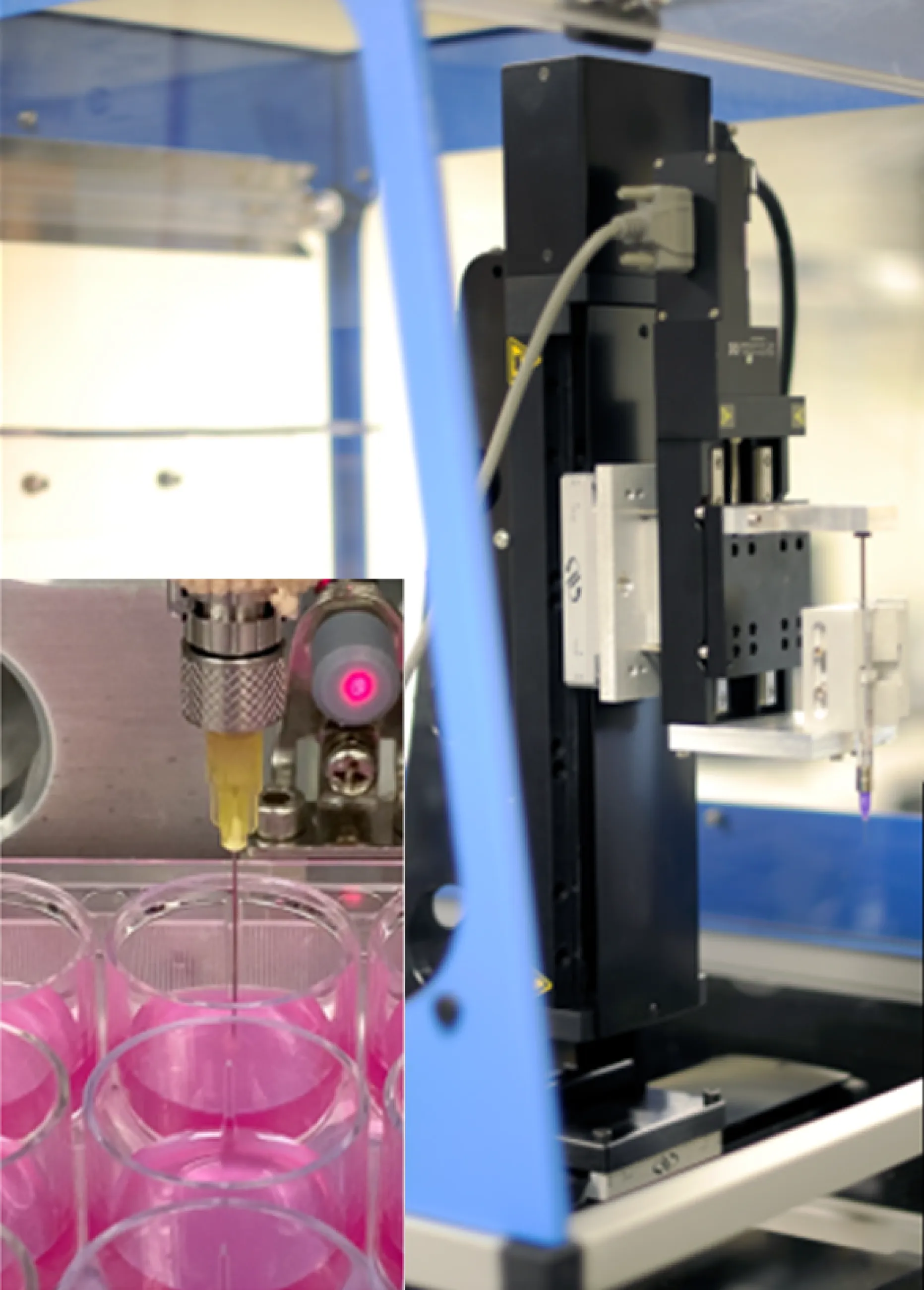Glyn Palmer, PhD, assistant professor in the UF Department of Orthopaedic Surgery and Sports Medicine research division, is using 3D printing technology to develop a functional liver tissue model that enables screening for liver toxicity of compounds found in drug therapies. The research aims to provide a better alternative to existing animal models and 2D in vitro cell culture approaches that often fail to predict the toxicity of test compounds during the drug development process, leading to development failures, black box warnings, or drug withdrawal from the market. The work was performed as part of a multi-disciplinary collaboration among UF researchers (Jon Dobson, Peter McFetridge, Clayton Mathews, Brent Sumerlin, Steven Chisolm and Vignesh Subramaniam) and Merck (Andreas Baudy). Led by Tommy Angelini, PhD, associate professor in the UF Department of Mechanical and Aerospace Engineering, the model uses a novel technology that combines 3D printing and a Liquid-like solid medium to reproducibly generate cellular structures of pre-defined size and shape, that remain viable in long-term culture.
Using this system, the UF Orthopaedics research team, comprised of Dr. Palmer, Dr. Carolina Abrahan and Brett Higgins employed liver function assays to identify cellular compositions and culture conditions that produce microtissues mimicking human liver. The best microtissues were composed of hepatocyte cells mixed with endothelial cells (HUVECs) and type I collagen extracellular matrix, stably produced albumin and urea, and had a gene expression profile similar to native human liver tissue. Additionally, enzymatic function in response to stimulation with a standard drug panel, was found to be 70 to 80 percent of human liver cells. These highly promising findings suggest that the 3D printed liver model has functions comparable to human liver. Future testing will determine to what extent the printed microtissues can accurately predict the toxicity of test compounds and distinguish good (safe) compounds from bad (toxic) ones. Successful prediction of toxicity will fulfill a critical need in drug development by reducing failure rates, lowering costs and increasing the pace of the development process.
To learn more about this exciting technology, please visit UF Innovate:



